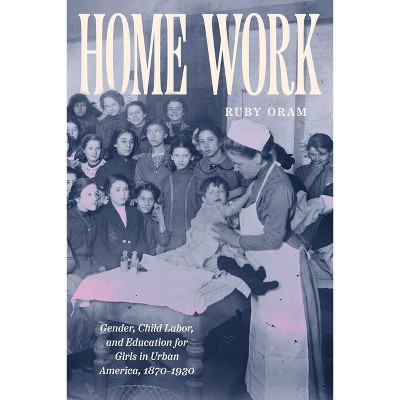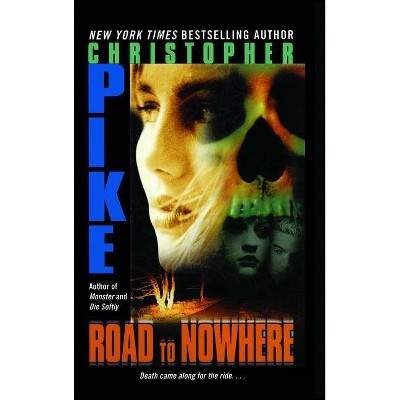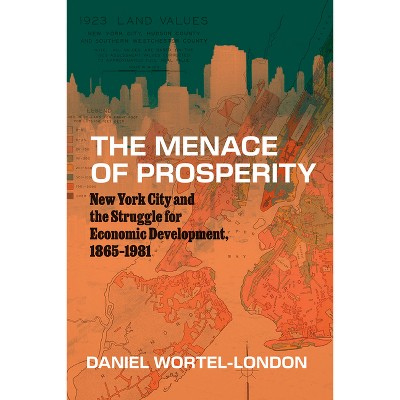Sponsored

Road to Nowhere - (Historical Studies of Urban America) by Emily Lieb
$30.00
In Stock
Eligible for registries and wish lists
Sponsored
About this item
Highlights
- Traces the birth, plunder, and scavenging of Rosemont, a Black middle-class neighborhood in Baltimore.
- About the Author: Emily Lieb is a writer and historian in Seattle, Washington.
- 240 Pages
- History, United States
- Series Name: Historical Studies of Urban America
Description
About the Book
"Traces the birth, plunder, and scavenging of Rosemont, a Black middle-class neighborhood in Baltimore. In the mid-1950s Baltimore's Rosemont neighborhood was alive and vibrant with smart rowhouses, a sprawling park, corner grocery stores, and doctor's offices. By 1957, a proposed expressway threatened to gut this Black, middle-class community from stem to stern. That highway was never built-but it didn't matter: even the failure to build it destroyed Rosemont economically, if not physically. In telling the history of the neighborhood and the notional East-West Expressway, Emily Lieb shows the interwoven tragedies caused by racism in education, housing, and transportation policy. Black families had been attracted to the neighborhood when Baltimore's Board of School Commissioners converted several white schools into "colored" ones, but this also laid the groundwork for predatory real-estate agents who bought low from white sellers and sold high to determined Black buyers. Despite financial discrimination, Black homeowners built a thriving community before the City Council formally voted to condemn some nine hundred homes in Rosemont for the expressway, leading to deflated home values and even more predatory real estate deals. Drawing on land records, oral history, media coverage, and policy documents, Lieb demystifies blockbusting, redlining, and prejudicial lending, highlighting the national patterns at work in a single neighborhood. The result is an absorbing story about the deliberate decisions that produced racial inequalities in housing, jobs, health, and wealth-as well as a testament to the ingenuity of the residents who fought to stay in their homes, down to today"-- Provided by publisher.Book Synopsis
Traces the birth, plunder, and scavenging of Rosemont, a Black middle-class neighborhood in Baltimore. In the mid-1950s Baltimore's Rosemont neighborhood was alive and vibrant with smart rowhouses, a sprawling park, corner grocery stores, and doctor's offices. By 1957, a proposed expressway threatened to gut this Black, middle-class community from stem to stern. That highway was never built, but it didn't matter--even the failure to build it destroyed Rosemont economically, if not physically. In telling the history of the neighborhood and the notional East-West Expressway, Emily Lieb shows the interwoven tragedies caused by racism in education, housing, and transportation policy. Black families had been attracted to the neighborhood after Baltimore's Board of School Commissioners converted several white schools into "colored" ones, which had also laid the groundwork for predatory real-estate agents who bought low from white sellers and sold high to determined Black buyers. Despite financial discrimination, Black homeowners built a thriving community before the city council formally voted to condemn some nine hundred homes in Rosemont for the expressway, leading to deflated home values and even more predatory real estate deals. Drawing on land records, oral history, media coverage, and policy documents, Lieb demystifies blockbusting, redlining, and prejudicial lending, highlighting the national patterns at work in a single neighborhood. The result is an absorbing story about the deliberate decisions that produced racial inequalities in housing, jobs, health, and wealth--as well as a testament to the ingenuity of the residents who fought to stay in their homes, down to today.Review Quotes
"A good introduction into how local and federal policies and interests shaped not only this part of Baltimore but many other, usually non-White neighborhoods in other cities across the country." -- "The Urbanist"
"As a child I puzzled over a 1960 picture of my father with his officemates at the city housing authority, and wondered, vaguely, why he was the only dark person in the photo and why he no longer worked there. When we went to church, or visited my aunt in Rosemont, I was struck by the iconic highway to nowhere on Franklin Street, which seemed somehow connected to the mushrooming numbers of liquor stores and emptied houses and people nodding on streetcorners. Smartly written and keenly perceptive, Lieb's Road to Nowhere unveils the real nature of the deleterious racially segregated housing structure policies and practices of the era between 1950 and 1980. Effectively tying the growth of segregated education to the sprawl of urban segregation itself, Lieb exposes the sad fact that America created a segregated housing market to meet the requirements of a racial myth. More surprising than the devastation of the original sin of redlining was the municipal remedy for poor black homeowners of the early 1970s: 'Banks, investors, and even brokers earned more money from the government when homeowners defaulted than they did when buyers paid their loans in full.' One of the best telescoped digests of the decades-long commitment to racial housing segregation and a tour de force in the political history of Baltimore City, Road to Nowhere is an invaluable scholarly work. Moreover, it will contribute importantly to the contemporary socioeconomic justice movement in Baltimore by becoming a key piece of evidence for citizens' groups like Fayette Street Outreach run by Ms. Edna Manns-Lake and Sonia Eaddy's Southwestern Partnership Coalition of Poppleton Street."--Lawrence Jackson, author of "Shelter: A Black Tale of Homeland, Baltimore"
"With compelling prose and vital characters, Lieb tells the story of the rise and fall of an idea--the plan to maintain segregation in Baltimore by demolishing the city's Black neighborhoods and building highways. Black residents in the city's Rosemont neighborhood persisted, resisted, suffered, and outlasted the era of interstate highway construction, one community among many affected by highway construction all across America."--LaDale C. Winling, author of "Building the Ivory Tower: Universities and Metropolitan Development in the Twentieth Century"
"Through an exploration of a single neighborhood, Road to Nowhere shows how failed development caused great harm to actual people and places caught in the entanglements of an inhumane bureaucracy in Baltimore. The book highlights the devastating human cost of speculative development and challenges any notion that residents were responsible for the destruction of their own neighborhood. Lieb shows that blight is a fiction made real when planners, politicians, and power brokers refuse to see or hear the people already on the land. This is a beautiful investigation, one that sees the human costs of real estate speculation through road construction. Urban historians and planners should remember the story of Rosemont and its residents."--P. Nicole King, coeditor of "Baltimore Revisited: Stories of Inequality and Resistance in a U.S. City"
About the Author
Emily Lieb is a writer and historian in Seattle, Washington.Dimensions (Overall): 9.0 Inches (H) x 6.0 Inches (W) x .56 Inches (D)
Weight: .74 Pounds
Suggested Age: 22 Years and Up
Number of Pages: 240
Genre: History
Sub-Genre: United States
Series Title: Historical Studies of Urban America
Publisher: University of Chicago Press
Theme: 20th Century
Format: Paperback
Author: Emily Lieb
Language: English
Street Date: November 6, 2025
TCIN: 1006060988
UPC: 9780226844381
Item Number (DPCI): 247-33-6252
Origin: Made in the USA or Imported
If the item details aren’t accurate or complete, we want to know about it.
Shipping details
Estimated ship dimensions: 0.56 inches length x 6 inches width x 9 inches height
Estimated ship weight: 0.74 pounds
We regret that this item cannot be shipped to PO Boxes.
This item cannot be shipped to the following locations: American Samoa (see also separate entry under AS), Guam (see also separate entry under GU), Northern Mariana Islands, Puerto Rico (see also separate entry under PR), United States Minor Outlying Islands, Virgin Islands, U.S., APO/FPO
Return details
This item can be returned to any Target store or Target.com.
This item must be returned within 90 days of the date it was purchased in store, shipped, delivered by a Shipt shopper, or made ready for pickup.
See the return policy for complete information.
Trending Non-Fiction


$18.28
was $19.58 New lower price
4.7 out of 5 stars with 17 ratings
















